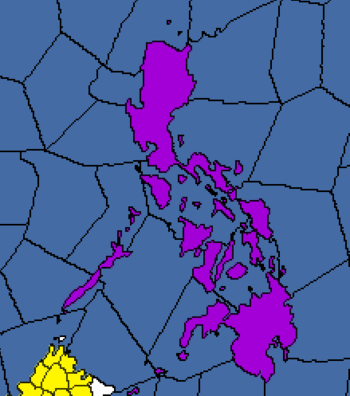Las Islas del Poniente
Jump to navigation
Jump to search
The Commonwealth of the West Indies La Maharlikano Comunidad de la Islas del Poniente | |
|---|---|
| Motto: El destino marcha como cualquier hombre Destiny marches like any man | |
| Anthem: Maharlikan Flight | |
 | |
| Capital | Vigan City |
| Largest City | Manila |
| Recognised regional languages | Tagalog, Waray, Bicolano, Ilocano, Pangasinense, Bisaya, Moro, Pampangeno |
| Ethnic groups (1820) | Malay (98.7%) Chinese (0.6%) Mestizo (0.2%) Negrito (0.3%) Caucasian (0.2%) Negro (0.01%) |
| Demonym(s) | Filipino, Ponienteian |
| Government | Devolved Constitutional Parliamentary Monarchy |
• Supreme Chief | Teodoro Lucero y Maal |
• Triumvirate | Jose Villanueva Rajah Matanda Tarik Salah-al Din |
| Legislature | Rajahanate Council |
| Independence from the Spanish Empire | |
• Declaration of Independence | January 24, 1744 |
• Antipolo Articles of Confederation | December 19, 1763 |
• Spanish Withdrawal | August 13, 1790 |
• Constitution | June 12, 1794 |
| Population | |
• 1820 estimate | 2, 400, 000 |
| Currency | Peso (₱) |
| Time zone | UTC+8 (Manila Time) |
| Date format | mm-dd-yyyy |
Etymology
During his expeditions in 1542, Spanish explorer Ruy López de Villalobos named the islands of Leyte and Samar "Felipinas" in honor of Philip II of Spain. Eventually, the name Las Islas Filipinas would be used to cover the archipelago's Spanish possessions. The demonym of Philippine is an anglicized translation of the Spanish name.
During the Ponienteian Revolution, the Antipolo Pact proclaimed the establishment of the La Maharlikano de las islas del Poniente or the Commonwealth of the West Indies. A Maharlika is a Tagalog word which refers to the feudal warrior class of the Tagalog Societies in the Luzon island.

